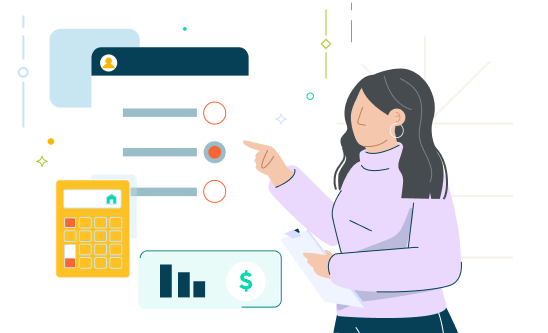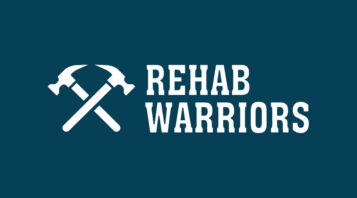If your family is expanding and you’re running out of space, you’re relocating for work, or you want to purchase an inexpensive home to renovate and flip, you’ll likely have to endure yet another mortgage approval process.
For some homeowners, this isn’t easy—especially if you also have non-mortgage debt. One of the most important factors for mortgage approval is debt-to-income (DTI) ratio, or the amount of money you make each month vs. your monthly loan payments.
Buying a house with a debt-to-income ratio and getting a mortgage approval isn’t always simple, but in this article, we’ll discuss the ins and outs of home buying with a high DTI ratio.
Can You Get a Mortgage With a High Debt-to-Income Ratio?
Buying a house with high debt-to-income ratios is possible, but it’ll depend on the type of loan you’re pursuing.
Next, we’ll take a closer look at the options.
What is the Highest Debt-to-Income Ratio Allowed for a Mortgage?
Different mortgage loan types have different debt-to-income ratio requirements. Traditional mortgages (30-year notes with a 20% down payment and a fixed interest rate) usually require a ratio of 36% or less. Note that the debt-to-income ratio for a second home will also vary.
However, you may be eligible to seek a different loan type with its own ratio requirement:
- Veterans may be eligible for Veteran Affairs (VA) loans, which typically requires a DTI of 41% or less
- First-time homeowners who plan to live in the home as a primary residence may be eligible for Federal Housing Administration (FHA) loans with a DTI of 43% or less
- A USDA loan normally stipulates a ratio of 41% or less
If you’re considering getting a mortgage with high debt-to-income ratio, speak to a mortgage lender about your options for alternatives to the traditional 30-year fixed loan.
What Percentage of Debt-to-Income is Good for Mortgages?
During the mortgage approval process, lenders consider two indicators of your financial security and creditworthiness:
- Your front-end ratio, or the percentage of your gross monthly income you’ll spend on housing once you’re approved for the loan, including mortgage principal, mortgage interest, property taxes, homeowners insurance, and private mortgage insurance (PMI) if applicable
- Your back-end ratio, or the amount of money you spend paying non-housing debts vs. your total income
In order to succeed in your approval process, you’ll have to show your mortgage lender that you’re financially stable enough to sustain your housing costs (including making your mortgage payment) without defaulting on your other debts if your loan is approved.
Applicants should attempt to follow the 28/36 rule—most mortgage lenders will approve your application if you spend less than 28% of your income on housing once the loan is approved, and you remain below a debt-to-income ratio of 36%. There are options available on how to lower debt-to-income ratio if you exceed that number.
How to Buy a House With High Debt-to-Income Ratio
Ready to buy a house with a high debt-to-income ratio? If you’re seeking mortgage approval while carrying substantial debt, you’ll have to make some financial adjustments to secure the loan—and the home—that you really want. Let’s explore your options.
Sell Your Existing Home
If you have a significant medical, credit card, or student loan debt, you could sell your current home. You’ll be able to pay off your existing home loan or mortgage. Likewise, you can use the proceeds to make a down payment on a new property. Let’s explore an example:
- You bought a home for $200,000 four years ago. You’ve paid $50,000 in principal and interest towards your existing debt so far.
- Over the last four years, property values in your neighborhood have increased—perhaps your home is now worth $250,000.
- If you sell your home for $250,000 and pay off the remainder of your mortgage ($150,000), your proceeds from the sale could be as high as $100,000.
By using the proceeds from your home sale to pay off your other debts, you can decrease your debt-to-income ratio and improve your likelihood of future mortgage approvals.
Pay Off Your Debts
Selling your home is one way to pay off your debts, but it means moving out of your current home sooner than planned—and finding a new place to live while you search for a new property and await a lender’s approval. Some other ways to decrease your debt include:
- Seeking a home equity loan for debt consolidation.
- Increasing your income by picking up a second job and using the additional income to pay off your debts.
- Tightening your belt by buying store-brand foods, reducing your leisure budget, or going without one or more streaming services and subscriptions.
- Reduce your living costs by purchasing a cheaper car, doing your own lawn maintenance, or trying to reduce your utility bill.
Working with a Sale-Leaseback
What if you could stay in your current home while reducing your debt-to-income ratio? A sale-leaseback program can potentially help you with this.
Through a sale-leaseback, you sell the house, converting your equity to cash. You can use the cash to pay off the remainder of your existing mortgage and the remaining profits—including paying off a high-interest credit card, old medical bill, or student loan.
Key Takeaways
If your high debt-to-income ratio is making you nervous about your next mortgage approval, there are options for reducing your monthly debt payment obligations and securing your next dream home.
But, one of the best options of may be paying off your debts, reducing your ratio, and converting your hard-earned equity through a sale-leaseback solution. You worked hard for your first home, and if it’s time to expand (or downsize), you need a flexible, smart option for securing finances, even if your credit score isn’t at its best.
If you’re ready to lower your debt-to-income ratio and get approved for your next home, consider looking into sale-leaseback programs and contact a financial advisor to explore your options.
Sources:
- Forbes. What is My Debt to Income Ratio? https://www.forbes.com/advisor/mortgages/what-is-my-debt-to-income-ratio/
- Business Insider.The 28/36 rule lays out how much debt you can have and still qualify for most mortgages. https://www.businessinsider.com/personal-finance/28-36-rule-mortgages



















